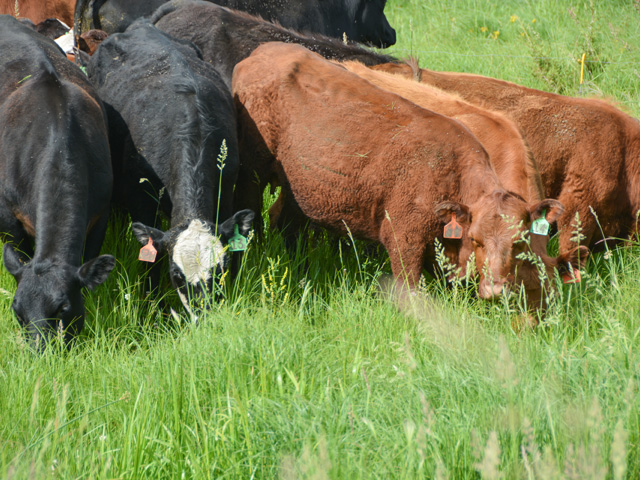CRP Grasslands Signup Jumps
With Grasslands Program Push, USDA Sees Rise in CRP Acreage
OMAHA (DTN) -- Acreage in the overall Conservation Reserve Program will increase by a net 1.7 million acres in 2022 after USDA saw a bumper enrollment in the CRP Grasslands signup.
All told, USDA should come out of fiscal year 2022 with 23.8 million acres enrolled in overall CRP, the largest acreage in the program since fiscal year 2016.
USDA announced Tuesday, July 12, that it is accepting offers for more than 3.1 million acres through the CRP Grasslands program, the highest in the program history. The grasslands program allows livestock producers to hay and/or graze the grasslands while following an approved conservation plan. A key part of the program is to keep the acres in grasslands rather than converted into development or crop production.
The average rental rate for CRP Grasslands is about $15 an acre nationally, though it varies by county.
The CRP Grasslands program now has about 7 million acres after enrolling 2.5 million acres in the program last year as well.
P[L1] D[0x0] M[300x250] OOP[F] ADUNIT[] T[]
NEW ACRES GOING INTO PROGRAM
Combined with General CRP signup of about 2 million acres and Continuous CRP enrollment of 464,000 acres, USDA will have about 5.6 million new acres going into the program this year. That offsets more than 3.9 million acres in CRP contracts that are expiring this year.
The top states for Grassland CRP enrollment include Colorado (642,000 acres), South Dakota (nearly 425,000 acres) and Nebraska (nearly 422,000 acres). States with the highest percentage increase in acres this year included western states facing more drought and water restrictions. Arizona had a 141% increase in acreage while California saw 129% increase and Utah a 122% increase.
The Grasslands CRP also pulled in more than 1.4 million acres from two "national priority zones" that include the Greater Yellowstone Migration Corridor -- parts of eastern Idaho, southwest Montana and western Utah -- and the Dust Bowl Zone, which includes eastern Colorado, western Kansas, the Oklahoma Panhandle, eastern counties in New Mexico and most of the Texas Panhandle.
USDA also noted the Farm Service Agency efforts to reach historically underserved farmers, including beginning farmers and military veterans, also enrolled more than 5,000 farmers that included about 1.9 million acres of CRP as well.
UNDER PRESSURE FOR FLEXIBILITY
The bump up in Grasslands CRP and overall acreage in the program also comes as USDA was under pressure this year to provide "flexibility" to producers. Members of Congress and others called on USDA to allow crop production on CRP ground to offset losses in crop production because of the war in Ukraine. USDA did allow acres with expiring contracts to leave the program earlier than normal, but the department continued with its enrollment periods for the various CRP programs.
"This year's record-breaking Grassland CRP signup demonstrates the continued success and value of investments in voluntary, producer-led, working lands conservation programs," Agriculture Secretary Tom Vilsack said. "Grassland CRP clearly demonstrates, time and time again, that conservation priorities and agricultural productivity not only have the capacity to coexist but also complement and enhance one another. Through all our working land conservation programs, farmers and ranchers play a critical role in helping secure the future of both our food production and our natural resources."
Chris Clayton can be reached at Chris.Clayton@dtn.com
Follow him on Twitter @ChrisClaytonDTN
(c) Copyright 2022 DTN, LLC. All rights reserved.






